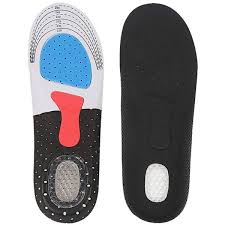
Supination, also known as underpronation, is a condition where the weight of the body rolls onto the outer edges of the feet during walking or running. This can lead to a variety of issues, including improper foot alignment, discomfort, and an increased risk of injury. Insoles designed specifically for supination can play a crucial role in correcting foot alignment and providing much-needed relief. In this article, we will explore how Insoles for supination can help correct your foot alignment, the benefits they offer, and how to choose the right pair for your needs.
Understanding Supination and Its Effects
What is Supination?
Supination occurs when the foot rolls outward during the walking or running cycle. This means that instead of the foot rolling inward slightly (which is normal pronation), it rolls outward, putting excessive pressure on the outer edges of the foot. Supination is less common than overpronation but can lead to significant issues if not addressed.
Causes of Supination
Several factors can contribute to supination, including:
- Genetics: Some people are naturally predisposed to supination due to the shape and structure of their feet.
- High Arches: Individuals with high arches are more likely to supinate, as their feet have less natural shock absorption.
- Footwear: Wearing shoes that do not provide adequate support or are worn out can exacerbate supination.
- Injuries: Previous injuries to the feet or ankles can alter gait patterns, leading to supination.
Effects of Supination
Supination can lead to a range of problems, including:
- Foot Pain: Excessive pressure on the outer edges of the feet can cause pain and discomfort.
- Ankle Injuries: Supinators are more prone to ankle sprains and other injuries due to the instability caused by outward rolling.
- Knee and Hip Pain: Misalignment of the feet can lead to improper alignment of the knees and hips, causing pain and discomfort in these areas.
- Plantar Fasciitis: The strain on the foot’s arch can lead to inflammation of the plantar fascia, resulting in heel pain.
How Insoles for Supination Work
Insoles for supination are designed to correct the alignment of the feet and provide the necessary support to prevent excessive outward rolling. Here’s how they work:
Arch Support
Insoles for supination typically feature a high arch support to match the contours of the feet. This support helps distribute weight more evenly across the foot, reducing pressure on the outer edges and encouraging a more neutral gait.
Cushioning
Proper cushioning is essential for absorbing shock and reducing the impact on the feet during walking or running. Insoles for supination often include extra padding in the heel and forefoot areas to provide additional shock absorption.
Heel Cup
A deep heel cup stabilizes the heel and prevents excessive movement. This is crucial for maintaining proper foot alignment and reducing the risk of ankle sprains.
Corrective Angles
Some insoles are designed with corrective angles to realign the foot and promote a more neutral gait. These angles help guide the foot through the proper motion, reducing the tendency to roll outward.
Material
Insoles for supination are usually made from durable, supportive materials such as EVA (ethylene vinyl acetate) foam or gel. These materials provide long-lasting support and comfort.
Benefits of Using Insoles for Supination
Improved Foot Alignment
One of the primary benefits of using insoles for supination is improved foot alignment. By providing the necessary support and correction, these insoles help align the feet properly, reducing the strain on the outer edges and promoting a more natural gait.
Reduced Pain and Discomfort
Insoles for supination can significantly reduce pain and discomfort associated with this condition. By distributing weight more evenly and providing cushioning, they help alleviate pressure on the feet, ankles, knees, and hips.
Enhanced Stability
A deep heel cup and proper arch support enhance stability, reducing the risk of ankle sprains and other injuries. This is especially important for individuals who engage in physical activities such as running or sports.
Increased Shock Absorption
The cushioning provided by insoles for supination helps absorb shock and reduce the impact on the feet during walking or running. This can prevent the development of conditions such as plantar fasciitis and other stress-related injuries.
Prevention of Future Issues
Using insoles designed for supination can help prevent the development of future issues related to improper foot alignment. By maintaining proper alignment and providing the necessary support, these insoles can reduce the risk of chronic pain and injuries.
Choosing the Right Insoles for Supination
Assess Your Needs
Before choosing insoles for supination, it’s important to assess your specific needs. Consider the severity of your supination, the type of activities you engage in, and any existing conditions or pain points.
Look for High Arch Support
Since supination is often associated with high arches, look for insoles that provide high arch support. This will help distribute weight more evenly and reduce pressure on the outer edges of the feet.
Check for Cushioning
Proper cushioning is essential for shock absorption and comfort. Look for insoles with extra padding in the heel and forefoot areas to provide adequate cushioning.
Consider Corrective Angles
Insoles with corrective angles can help realign the feet and promote a more neutral gait. These insoles are particularly beneficial for individuals with severe supination.
Material and Durability
Choose insoles made from durable, supportive materials such as EVA foam or gel. These materials provide long-lasting support and comfort.
Fit and Compatibility
Ensure that the insoles fit properly in your shoes and are compatible with the type of footwear you use. Some insoles are designed for specific types of shoes, such as athletic shoes or dress shoes, so choose accordingly.
Consult a Professional
If you are unsure about which insoles to choose, consider consulting a podiatrist or orthopedic specialist. They can provide personalized recommendations based on your specific needs and conditions.
Tips for Using Insoles for Supination
Gradual Adjustment
When you first start using insoles for supination, it’s important to allow your feet time to adjust. Start by wearing them for short periods and gradually increase the duration as your feet become accustomed to the new support.
Regular Replacement
Insoles can wear out over time, reducing their effectiveness. Regularly check your insoles for signs of wear and replace them as needed to ensure continued support and comfort.
Proper Footwear
In addition to using insoles, it’s important to wear proper footwear that provides adequate support. Avoid shoes with excessive wear, inadequate arch support, or insufficient cushioning.
Foot Exercises
Incorporate foot exercises and stretches into your routine to strengthen the muscles and improve flexibility. This can help enhance the effectiveness of the insoles and promote overall foot health.
Monitor Your Progress
Pay attention to any changes in your pain levels, alignment, or gait. If you notice significant improvements, continue using the insoles as recommended. If you experience persistent pain or discomfort, consult a healthcare professional for further evaluation.
Insoles for supination are a valuable tool for correcting foot alignment and alleviating the discomfort associated with this condition. By providing the necessary support, cushioning, and corrective angles, these insoles help promote a more neutral gait, reduce pain, and enhance overall foot health. When choosing insoles, it’s important to assess your specific needs, look for high arch support, proper cushioning, and durable materials. Gradual adjustment, regular replacement, and proper footwear can further enhance the benefits of using insoles for supination. With the right insoles and proper care, you can enjoy improved foot alignment, reduced pain, and a more comfortable walking or running experience.











